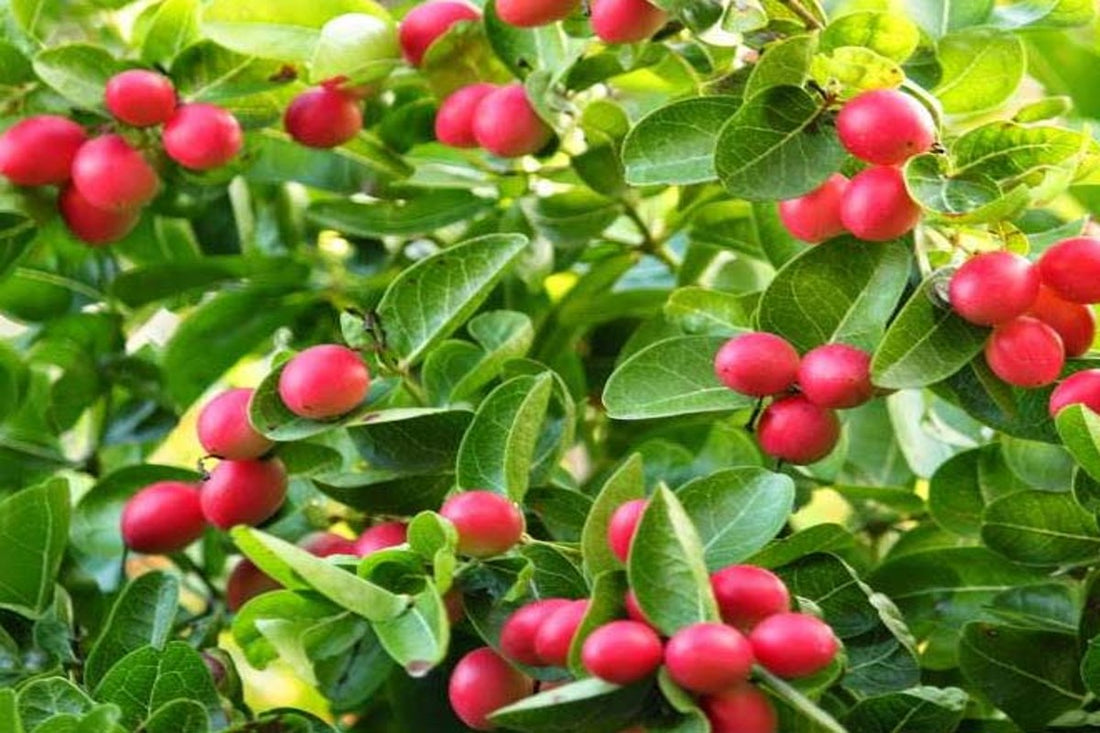

The Karonda Tree (Carissa carandas), often referred to as the "wild berry of India," is a powerhouse of nutrition, flavor, and ecological benefits. Its small, tangy fruits have been a staple in traditional medicine and culinary practices for cen Read more
Trending
Trees for Corporates
Karonda Tree: The Tangy Treasure Revolutionizing Health, Cuisine, and
You may also like
Corporate Plantations
Karonda Tree Uses
The Karonda Tree is a multitasking wonder, offering tangy fruits for pickles, vitamin-packed remedies for health, and thorny branches that double as natural fences. It’s nature’s all-in-one package.
Karonda Tree Benefits
Packed with antioxidants, iron, and vitamin C, the Karonda Tree’s fruits boost immunity, improve digestion, and keep anemia at bay while adding a zesty kick to your recipes.
Karonda Tree Cultivation
Growing a Karonda Tree is a gardener’s dream—it thrives in arid climates, requires minimal maintenance, and rewards you with tangy fruits and eco-friendly benefits.
Karonda Tree Fruits
These small, sour delights are stars in pickles, jams, and chutneys, transforming dishes with their bold flavor while packing a punch of nutrients.
Karonda Tree Medicinal Uses
From controlling blood sugar to improving gut health, the Karonda Tree’s fruits and leaves are Ayurvedic treasures offering a natural remedy for modern woes.
Karonda Tree Growth Conditions
A tough survivor, the Karonda Tree thrives in sandy, rocky soils and arid climates, proving that resilience and productivity can go hand in hand.
Karonda Tree for Sustainable Living
Its drought tolerance and low maintenance make the Karonda Tree a sustainable choice for gardens and farms, providing shade, fruits, and biodiversity support.
Karonda Tree in Traditional Cuisine
A staple in Indian kitchens, the Karonda Tree’s fruits turn ordinary meals into tangy feasts with pickles, chutneys, and desserts that excite the palate.
Karonda Tree for Landscaping
With its thorny branches and vibrant fruits, the Karonda Tree adds a unique touch to gardens while serving as a natural, eco-friendly hedge.
Karonda Tree Leaves
These underrated green gems are used in traditional remedies to treat wounds, inflammation, and digestive issues, showcasing the tree’s health-boosting superpowers.
Karonda Tree Environmental Impact
Beyond its tangy fruits, this eco-warrior improves soil quality, prevents erosion, and supports pollinators, making it an asset for sustainable ecosystems.
Karonda Tree History
With roots in Indian and Southeast Asian traditions, the Karonda Tree has been celebrated for centuries as a culinary gem and natural remedy.
FAQ
What is the Karonda Tree?
It’s a drought-tolerant, tangy treasure that produces nutrient-packed fruits, doubles as a natural fence, and serves up eco-friendly benefits for health, cuisine, and sustainability.
Why is the Karonda Tree called a tangy treasure?
Its small, sour fruits add a zesty twist to pickles, chutneys, and jams while offering impressive health benefits and a unique culinary charm.
What are the health benefits of the Karonda Tree?
Rich in vitamin C, iron, and antioxidants, its fruits boost immunity, improve digestion, and combat anemia, making it a natural remedy for modern health challenges.
Can I grow a Karonda Tree at home?
Yes! It’s easy to grow in arid climates with well-drained soil, making it perfect for low-maintenance gardens and sustainable living.
What are Karonda fruits used for?
These tangy delights are the secret to flavorful pickles, chutneys, jams, and even desserts, bringing bold taste and nutrition to your table.
What are the medicinal uses of the Karonda Tree?
Its fruits and leaves are used in traditional remedies for managing blood sugar, treating wounds, and improving gut health, proving its versatility.
Where does the Karonda Tree grow best?
It thrives in sandy, rocky soils and hot, dry climates, making it a resilient choice for gardens and farms in challenging conditions.
How does the Karonda Tree support sustainable living?
Its drought tolerance, low maintenance needs, and ability to improve soil quality make it an eco-friendly ally for sustainable farming and gardening.
Is the Karonda Tree good for landscaping?
Yes! With thorny branches, vibrant fruits, and low water requirements, it’s a great choice for natural hedges and ornamental landscaping.
What is the history of the Karonda Tree?
With roots in Indian and Southeast Asian traditions, it has long been celebrated as a culinary favorite and a natural healer in Ayurveda.
How do you care for a Karonda Tree?
Plant it in sunny, well-drained soil, water occasionally, and let this hardy tree reward you with tangy fruits and environmental benefits.
What role does the Karonda Tree play in ecosystems?
It prevents soil erosion, supports pollinators, and enhances biodiversity, proving it’s as beneficial to the environment as it is to your taste buds.
?
?
?
Most Popular
Connect with us
-
👥 Corporates
If you are looking for:
- 🌲 Tree Plantation Events
- 📊 CSR Projects
📧 corporate@growbilliontrees.com
📞 +91 9699723523
💬 +91 9325931304 WhatsApp (Only)
🕒 Mon - Sat | 10am - 7pm IST
-
🧩 Tree Plantation NGOs
If you are looking for:
- 💰 Financial Assistance
- 🤝 Operational Support
📧 support@growbilliontrees.com
📞 +91 9699723523
💬 +91 9325931304 WhatsApp (Only)
🕒 Mon - Sat | 10am - 7pm IST
-
🌼 Individuals
If you are looking for:
- 👥 Group Tree Plantation Drive
- 🌳 Bulk Tree Plantation
📞 +91 9699723523
💬 +91 9325931304 WhatsApp (Only)
🕒 Mon - Sat | 10am - 7pm IST





















